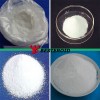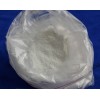Transdermal ethinyl estradiol carries a greater risk of clot formation and venous thromboembolism than naturally occurring 17β-estradiol, which some have theorized to be related to different amounts of hepatic metabolism after absorption. The same contraindications and precautions apply for EE2 as with other estrogen medications.
Estinyl was a preparation of EE2 alone that was used for the management of menopausal symptoms and female hypogonadism.
EE2 is released into the environment as a xenoestrogen from the urine and feces of people who take it as a medication.
The major concern with unopposed estrogen (without progestogen) is of endometrial cancer. As such, the medication is generally prescribed with progesterone in the setting of birth control.
















